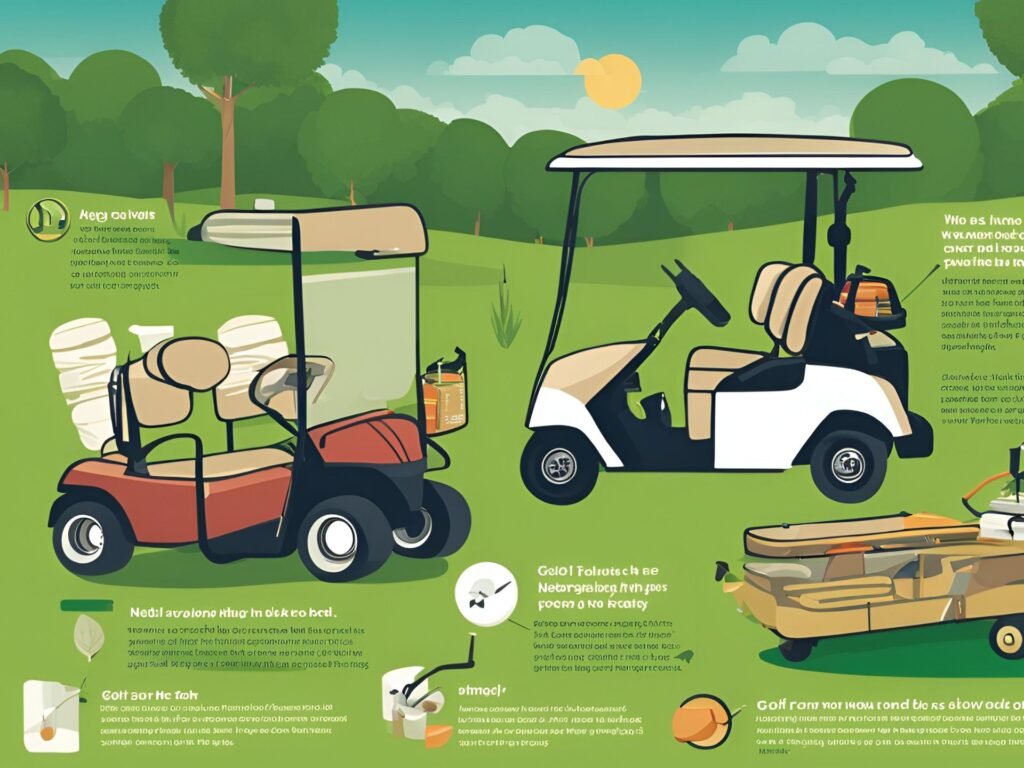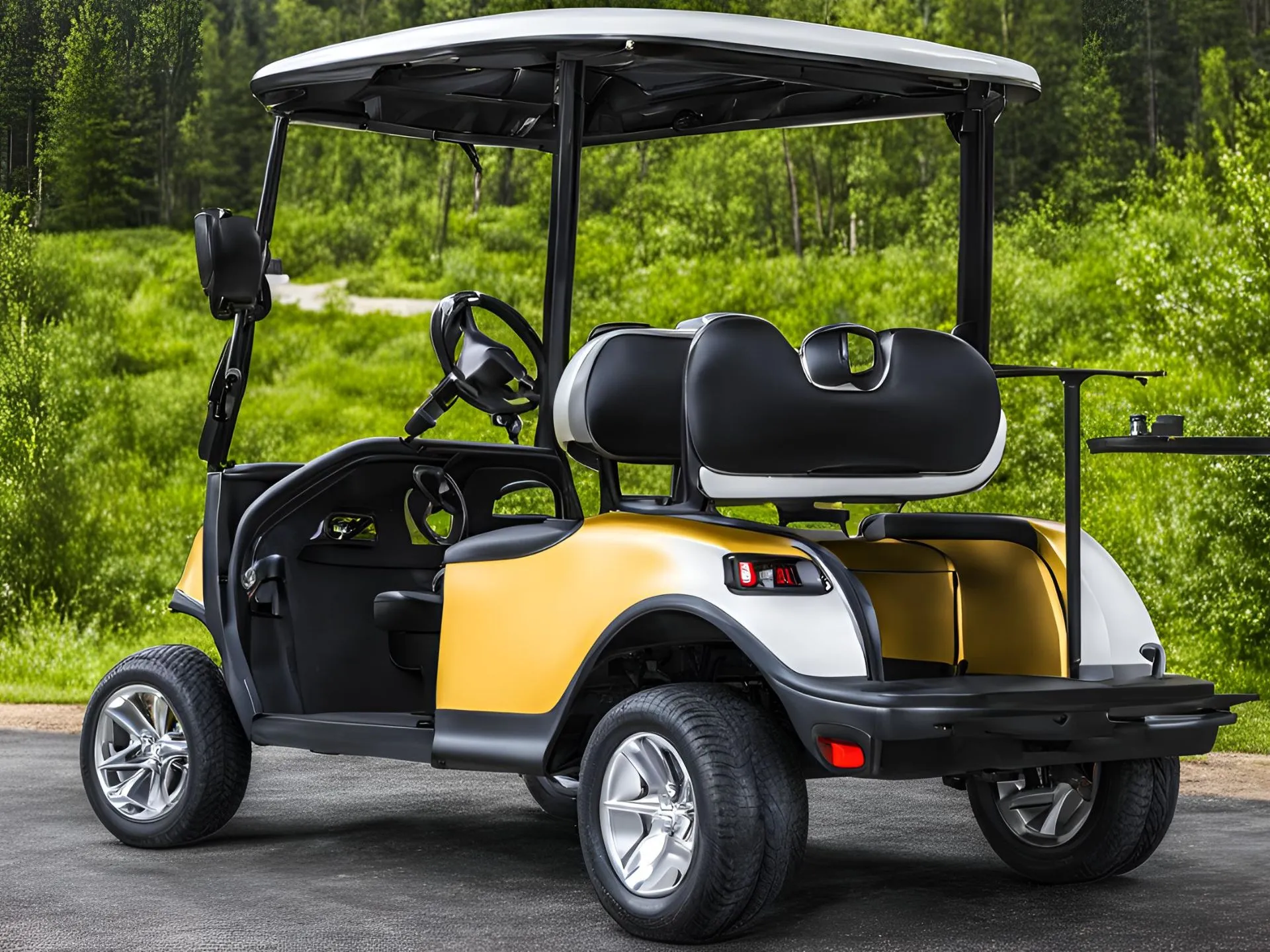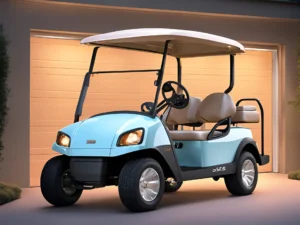If you’ve found yourself wondering why your gas golf cart is running slow, you’re not alone. Many golf cart owners, whether they’re using an EZGO, Club Car, or Yamaha, encounter this issue at some point. Understanding the common reasons behind a golf cart running slow can help you troubleshoot effectively and get back to cruising the fairways in no time. Let’s dive into the mechanics and features of these carts to get a better grasp of what might be causing the slowdown.
Understanding Your Gas Golf Cart
To get to the bottom of why your gas golf cart may be running slow, it’s essential to understand how a gas golf cart works. At its core, a gas golf cart runs on a small internal combustion engine that powers the vehicle using gasoline. This engine drives a controller that regulates power output to the wheels, providing enough power for a smooth ride. When everything is functioning as it should, these carts can reach impressive speeds. However, if any component, like the carburetor or the drive belt, begins to malfunction, you might notice that your golf cart starts to lag.
How a Gas Golf Cart Works
Understanding the mechanics of a gas golf cart is key to diagnosing issues. The engine ignites a mixture of fuel and air, creating the energy needed to propel the cart forward. The controller acts as the brain, managing the flow of energy throughout the system. When you step on the accelerator, the key switch sends a signal to the solenoid, allowing the battery pack to deliver the required voltage. If your cart is running slow, it could be due to insufficient battery voltage or a failing solenoid. Regular checks with a voltmeter can help ensure that your system is running smoothly.
Common Features of Golf Carts
Golf carts, including models like the EZGO TXT and Club Car, come with various features designed to enhance your golfing experience. These features can include storage compartments, comfortable seating, and a smooth drive, making them perfect for traversing the greens. However, these carts also rely on several mechanical components—like the drive belt and the carburetor—that can wear down over time. If your golf cart is running slow, it might be worth investigating these features to identify any potential issues. Even something as simple as a clogged air filter can cause a significant decrease in performance.
Importance of Maintenance
Regular maintenance is crucial for keeping your gas golf cart running at peak performance. Just like any other vehicle, a golf cart requires attention to its key components. Whether it’s checking the battery pack or ensuring that the drive belt is in good shape, staying on top of maintenance can prevent your cart from running slow. If you’re not comfortable doing this yourself, don’t hesitate to consult a mechanic or a mechanic’s assistant for help. They can provide insights and perform checks that could save you from a frustrating day on the course. Remember, a well-maintained cart is key to a better experience on the greens!
Common Reasons for a Golf Cart Running Slow

Issues with the Carburetor
One of the most common reasons why your gas golf cart may be running slow is issues with the carburetor. The carburetor plays a crucial role in mixing air and fuel to ensure your gas golf cart runs efficiently. If it becomes clogged or dirty, it can restrict the flow of fuel, causing the engine to lose power. This means your EZGO or Yamaha cart may not get enough power to perform at its best. Regular cleaning and maintenance of the carburetor can help prevent this issue. If you notice your golf cart is running sluggishly, it might be time to check the carburetor. A mechanic or a mechanic’s assistant can quickly diagnose this problem and get your cart running smoothly again.
Drive Belt Malfunction
The drive belt is another component that can lead to a golf cart running slow if it malfunctions. This belt is responsible for transferring power from the engine to the wheels. If it becomes worn out or frayed, it may slip or fail to provide the necessary power output for your cart to run effectively. You might hear unusual noises or feel a lack of acceleration, indicating that the drive belt needs attention. Inspecting the drive belt regularly and replacing it when necessary can significantly enhance your cart’s performance. Whether you own an EZGO TXT or a Club Car, a healthy drive belt is vital for a better experience on the course.
Controller Problems
The controller is essentially the brain of your gas golf cart, managing the power output to the wheels. If the controller is experiencing issues, it can lead to significant performance problems, including your golf cart running slow. This could happen due to electrical faults or damage to the controller’s components. For example, a faulty solenoid or resistor could prevent your cart from receiving the proper battery voltage needed for optimal operation. If you suspect controller problems, it’s wise to consult a mechanic. They can use a voltmeter to test the system and pinpoint the exact problem, ensuring your gas golf cart runs like new again.
Diagnosing Your Slow-Running Golf Cart

Checking the Key Switch
One of the first things you should check when your gas golf cart is running slow is the key switch. This simple component is critical as it controls the power flow to the engine. If the key switch is faulty or has poor connections, it could prevent your EZGO or Club Car from receiving the necessary voltage, causing your cart to run sluggishly. You might notice that the golf cart starts intermittently or doesn’t seem to respond as quickly as it should. A quick inspection can often reveal loose wires or corrosion, which are common culprits. If you’ve got a multimeter handy, you can use it to check the voltage at the key switch; if it’s not delivering enough power, consider replacing it to ensure your golf cart is running smoothly again.
Inspecting the Air Filter
Another often-overlooked component that can cause your gas golf cart to run slow is the air filter. This little part plays a huge role in ensuring that the engine gets the proper amount of air to mix with fuel. If the air filter is clogged with dirt and debris, it can restrict airflow, leading to a rich fuel mixture that can bog down the engine. So, if you find your golf cart is running slow, taking a moment to inspect and clean or replace the air filter can make a world of difference. For models like the Yamaha and EZGO TXT, keeping the air filter clean is essential for optimal performance. A clean filter means better airflow, which translates to a more powerful engine capable of handling those steep hills on the course!
Other Factors That Could Be Causing Slow Performance
Beyond the key switch and air filter, there are several other factors that could be causing your golf cart to run slow. Issues with the battery pack can significantly affect performance; if the battery voltage is low, your cart may not have enough power to accelerate properly. Regularly charging the battery is essential, especially if you notice your golf cart is running sluggishly. Additionally, environmental factors like steep inclines or heavy loads can put extra strain on your gas golf cart, making it harder for it to maintain speed. Lastly, don’t forget to consider the drive belt—if it’s worn or frayed, it can slip and hinder the cart’s ability to run smoothly. Taking a holistic approach to diagnosing the issue will help ensure your golf cart is running like new in no time!
Tips for Improving Golf Cart Performance
Regular Maintenance Practices
To keep your gas golf cart running smoothly and prevent it from running slow, regular maintenance is key. Start with routine checks of essential components like the battery pack and drive belt. Ensure that the battery is charged and that the voltage levels are optimal; a voltmeter can be your best friend here. Don’t forget about the carburetor and air filter—cleaning these parts can significantly enhance the performance of your EZGO or Club Car. Regular oil changes are also crucial for keeping the engine in top shape. If you’re not confident in performing these tasks yourself, it’s a good idea to consult a mechanic or a mechanic’s assistant who can help you identify any potential issues before they escalate. Remember, a well-maintained golf cart means a better experience on the course!
Upgrading Components
If you find that your golf cart is still lagging despite regular maintenance, it might be time to consider upgrading some components. For instance, investing in a high-performance controller can enhance the power output significantly, allowing your gas golf cart to run at higher speeds. You could also replace the drive belt with a more durable option designed to handle more power. Upgrading the carburetor can lead to improved fuel efficiency and better acceleration. Additionally, consider swapping out the key switch for a more reliable version if you’re experiencing intermittent starting issues. These upgrades can make a world of difference, ensuring your cart runs like new and handles those steep inclines easily.
When to Seek Professional Help
While tackling maintenance and upgrades can often resolve performance issues, there are times when you should definitely seek professional help. If your gas golf cart is running slow despite your best efforts, it’s wise to consult a mechanic. They have the tools and expertise to diagnose complex issues that may not be apparent to the average cart owner. If you notice signs of electrical problems, like a faulty solenoid or issues with the controller, don’t hesitate to get a professional opinion. Waiting too long can lead to more extensive damage and costly repairs down the line. Remember, having a mechanic check your golf cart can save you time and ensure your cart is back to running smoothly in no time!




